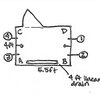Direct line from water tank to dishwasher?
graywings123
12 years ago
Featured Answer
Sort by:Oldest
Comments (15)
User
12 years agobrickeyee
12 years agoRelated Professionals
North New Hyde Park Handyman · 93927 Kitchen & Bathroom Remodelers · Creve Coeur Kitchen & Bathroom Remodelers · Kettering Kitchen & Bathroom Remodelers · Londonderry Kitchen & Bathroom Remodelers · Mesquite Kitchen & Bathroom Remodelers · Phoenix Kitchen & Bathroom Remodelers · Portage Kitchen & Bathroom Remodelers · Rochester Kitchen & Bathroom Remodelers · South Barrington Kitchen & Bathroom Remodelers · South Plainfield Kitchen & Bathroom Remodelers · Spokane Kitchen & Bathroom Remodelers · Terrell Kitchen & Bathroom Remodelers · Sharonville Kitchen & Bathroom Remodelers · Kiryas Joel Appliancesgraywings123
12 years agoUser
12 years agoionized_gw
12 years agomike_kaiser_gw
12 years agograywings123
12 years agobrickeyee
12 years agoGreenDesigns
12 years agolazypup
12 years agograywings123
12 years agobrickeyee
12 years agoJason Tucker
2 months agoJake The Wonderdog
2 months ago
Related Stories

HOUSEKEEPINGTackle Big Messes Better With a Sparkling-Clean Dishwasher
You might think it’s self-cleaning, but your dishwasher needs regular upkeep to keep it working hard for you
Full Story
HOUSEKEEPINGDishwasher vs. Hand-Washing Debate Finally Solved — Sort Of
Readers in 8 countries weigh in on whether an appliance saves time, water and sanity or if washing by hand is the only saving grace
Full Story
HOUSEKEEPINGHow to Remove Water Rings From Wood Tables
You may be surprised by some of these ideas for removing cloudy white water marks from wood surfaces
Full Story
MOST POPULARThanksgiving Tales: When the Turkey Tanks
Houzz readers prove adept at snatching victory from the jaws of entertaining defeat
Full Story
HOUSEKEEPINGProtect Your House From Winter Water Damage
Avoid costly repairs by learning to spot potential problem areas before water damage is done
Full Story
DISASTER PREP & RECOVERYRemodeling After Water Damage: Tips From a Homeowner Who Did It
Learn the crucial steps and coping mechanisms that can help when flooding strikes your home
Full Story
DECORATING GUIDESQuick Fix: Erase Water Rings from Furniture
A few household items can quickly rejuvenate tarnished wood tabletops
Full Story
HEALTHY HOMEHow to Choose a Home Water Filtering System
Learn which water purification method is best for your house, from pitchers to whole-house setups
Full Story
FEEL-GOOD HOME12 Very Useful Things I've Learned From Designers
These simple ideas can make life at home more efficient and enjoyable
Full Story
TILETop Tile Trends From the Coverings 2013 Show — the Wood Look
Get the beauty of wood while waving off potential splinters, rotting and long searches, thanks to eye-fooling ceramic and porcelain tiles
Full Story







ramona1976